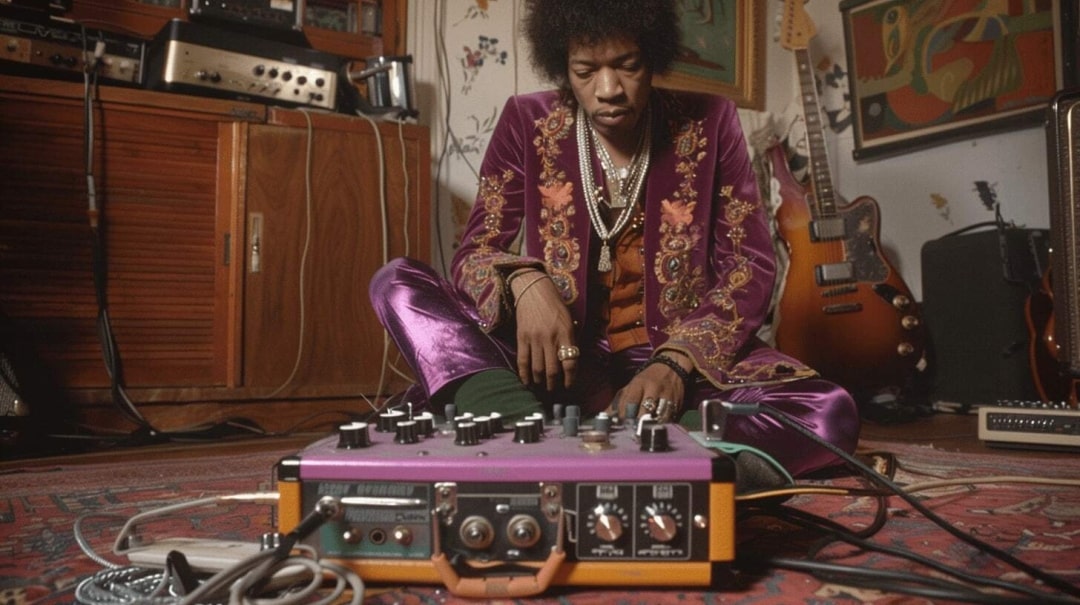The Birth of the Electric Guitar: Les Paul's Wizardry (1952)
Imagine rock 'n' roll without the electric guitar. Scary, right? Les Paul’s introduction of the Gibson Les Paul in 1952 turned the music world on its head. This solid-body electric guitar wasn’t just an instrument; it was a revolution.
It allowed for sustain, distortion, and that sweet, sweet feedback. Suddenly, guitarists were gods, wielding an axe that could slice through any mix. Without Les Paul, we'd all still be strumming unplugged in our garages.
Fun Fact: Les Paul was also a magician. His trick? Making our jaws drop with his guitar solos!
The Wah-Wah Pedal: Hendrix’s Sonic Weapon (1967)
When Jimi Hendrix stepped onto the scene, he brought with him an arsenal of effects, none more iconic than the wah-wah pedal. Introduced in 1967, the Cry Baby Wah allowed guitarists to manipulate their tone in real-time, creating that signature “wah” sound. Hendrix’s use of the pedal on tracks like “Voodoo Child” transformed it from a novelty to a necessity.
Fun Fact: Hendrix’s pedal was often a victim of his fiery performances—he’d set it on fire or smash it to pieces, all in the name of rock!
Multi-Track Recording: The Beatles Get Technical (1967)
The Beatles didn’t just make great music; they pioneered recording techniques. With the release of “Sgt. Pepper’s Lonely Hearts Club Band” in 1967, they utilized multi-track recording to its fullest. This allowed them to layer sounds, experiment with effects, and create complex arrangements that were previously impossible. George Martin, the fifth Beatle, helped transform the studio into an instrument itself.
Fun Fact: The Beatles would sometimes spend hours just perfecting a single sound effect. Talk about dedication!
The Synthesizer Boom: From Moog to the Masses (1970s)
The introduction of the Moog synthesizer in the late '60s and its popularization in the '70s changed rock music forever. Bands like Pink Floyd and The Who started incorporating synths into their music, adding a new dimension to their sound. The synth’s versatility allowed for an array of textures, from atmospheric pads to piercing leads, expanding the sonic palette of rock.
Fun Fact: The Minimoog was a favorite because it was portable. Well, as portable as a 30-pound machine can be!
The Drum Machine Revolution: Roland TR-808 (1980)
When the Roland TR-808 drum machine hit the scene in 1980, it wasn’t an instant hit. But soon, rock bands began to realize its potential. The 808’s deep bass kicks and crisp snares provided a new rhythmic backbone, influencing everyone from rock to hip-hop. Bands like New Order and Depeche Mode embraced the 808, and its sound became synonymous with innovation.
Fun Fact: The 808 was initially criticized for sounding too artificial. Now, its "artificial" sound is celebrated as iconic!
Bonus Track: Jamzone’s Digital Revolution

Just as these innovations transformed rock 'n' roll, Jamzone is revolutionizing how we play and practice music. With its extensive library of backing tracks and interactive features, you can jam out like never before, exploring the sounds of those legendary moments right from your living room.
Rock on Embrace the gear, cherish the innovations, and keep pushing the boundaries of what rock 'n' roll can be. And remember, the next big innovation could come from you 😉



